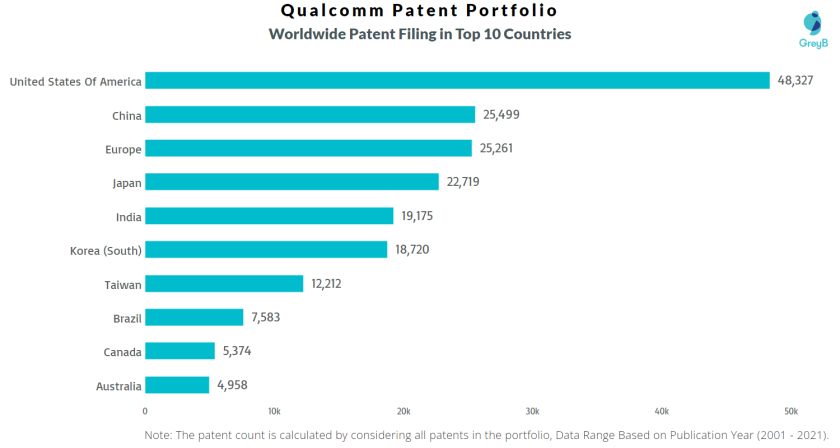Five of the top 10 most prolific inventors for 2023 are women according to grants issued by the U.S. Patent and Trademark Office and conveyed by Harrity LLP’s patent analytics team.
This represents a significant turnaround from recent inventing history but tells only part of the story because two of the women and four of the men are attributed to one company, Qualcomm Incorporated.
The Top Inventors List is based on the total number of U.S. utility patents that issued where the inventor was listed on the front of the utility patents.
Two of the top four individuals for 2023 are women from the same maker of wireless-related semiconductors, software, and services. Six of the top ten including men are Qualcomm employees. In 2022 only 17% of the inventors receiving international patents were women.
Just seven years ago in January 2017 Patentology articulated the sorry state of women inventors in a piece titled “The Most Prolific Inventors in the Past 25 Years.”
Where are the Women?
“As will be apparent by now,” reported Patentology in 2017, “there are no women in the top 10 inventor list. The USPTO does not collect or record the gender of inventors, however from inspection of the longer list I believe that the highest-ranked woman is Jody Akana, who comes in at number 34 with 699 patents.
“Unless women have full access to the same
circles of intellectual and creative activity as men,
we will not see equal representation of
women among our top inventors.”
“Akana is another member of Jony Ives’ design team at Apple, so hers are predominantly design patents. Audrey Goddard, a genomics scientist who was recently appointed Vice President of Research and Development at uBiome, is probably the highest-ranked female based on utility patents, at number 50 with 580 patents to her name.
“It is, unfortunately, unsurprising that women do not feature highly among the most prolific inventors. If the best indicator of inventive capacity is the opportunity to work with other prolific inventors, women have been at a distinct disadvantage for too long.
“The recent death of Vera Rubin – whose painstaking astronomical research provided the best evidence we have for the existence of ‘dark matter’ – highlights the problem. Less famous than… well… pretty much any make astronomer you could name, in 1965 Rubin became the first woman to get viewing time at the Palomar Observatory, an opportunity previously denied to women, ostensibly on the basis that there were no female toilets.
“She chose to study the density of stars in galaxies, despite having done important work on pulsars, because it was a less fashionable subject, and she would not have to spend so much effort vying for attention against male astronomers seeking to make names for themselves.

“Unless women have full access to the same circles of intellectual and creative activity as men, we will not see equal representation of women among our top inventors.”
What has changed?
More women are studying engineering and more are being hired from outside of the U.S. by the largest businesses. Industry and company strategy are a significant influence as to who gets hired and with what experience. Technology companies tend to patent more aggressively than say pharma companies and need more researchers to achieve lofty patents counts and establish terrrain.
Qualcomm, one of the largest and most active patent licensors, appears to be an outlier on many levels, including R&D. Are there simply more names on Qualcomm patents than other assignees?
Is China less supportive to women in research, encouraging them to seek more conducive environments and employers? Or is it simply a matter of which company, or nation, can offer the most attractive compensation?
It would appear that of the many foreign graduate students who study engineering in the U.S., not all elect to return home.
Who are today’s most inventive women and men?
(M) Tao Luo – Qualcomm – Born in China
(M) Junny Li – Qualcomm – China
(F) Xiania Zhang – Qualcomm – China
(F) Jing Sun – Ford and U. of Michigan – China
(M) Peter Gaal – Qualcomm Fellow – Hungary
(M) Frederick E. Shelton, IV – Johnson & Johnson – U.S.
(F) Young Zhou – Qualcomm –
(M) Woushi Chen – Qualcomm –
(F) Shan Liu – GlaxoSmithKline – China
(F) Li Zhang – ByteDance, Inc. (formerly with Qualcomm) – China.
Additionally, nine of the top ten inventors receiving U.S. patents are foreign born. The U.S. has frequently benefitted from engineers and scientists who prefer to live and work here.
The lone American, Frederick E. Shelton, IV, is said to be responsible for $14 billion in value for Johnson & Johnson. Lisa Seacast Delucca was said to have been “the second most prolific inventor in the world” and the leading inventor at IBM Research, although it is unclear if the data fully supports that.
Only 17% of inventors holding international patents were women in 2022, while 83% were men, the United Nations finds. And women remain “significantly underrepresented” in STEM occupations, according to the World Economic Forum’s latest Global Gender Gap Report.
Tap here for the 2023 list of the top 100 inventors.
* In an earlier draft of this article, inventors number one and two on the list, Tao Luo and Juny Li, were correctly identified as Qualcomm researchers, but are male. Multiple same names and similar spellings can make it difficult to discern the the sources of patented inventions. An IP CloseUp reader graciously shared the correct data.
Image source: Harrityllp.com; insights.greyb.com

